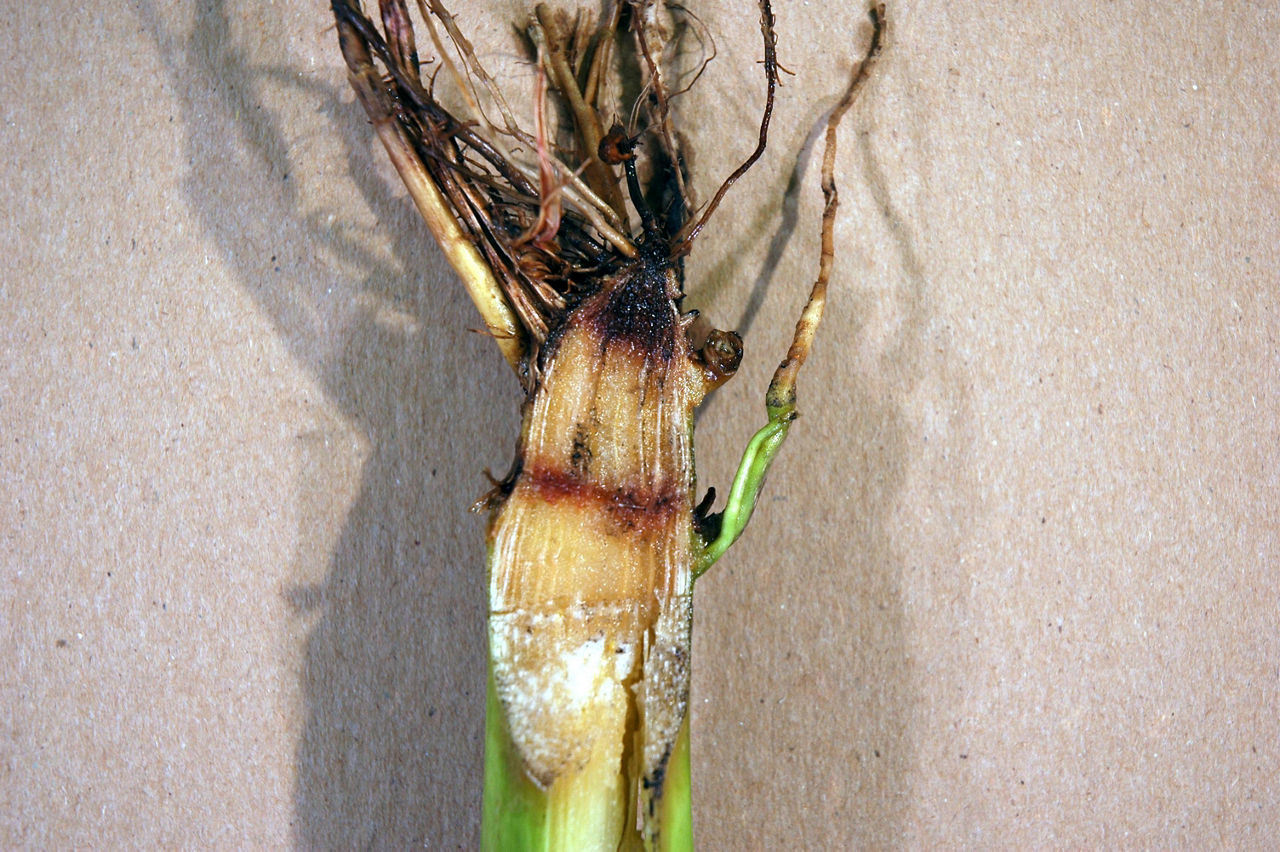3 MIN READ
Red Root Rot in Corn
June 16, 2021
Description
Red root rot (RRR) is a late-season corn disease caused by a soil fungi complex, of which Phoma terrestris is the main pathogen, and Pythium and Fusarium species are associated pathogens.1 P. terrestris is a widespread saprophytic organism that colonizes the underground parts of a variety of hosts. Early infection by Pythium species (and others) can cause root damage that promotes P. terrestris invasion in corn roots. Red root rot has been reported to cause corn yield reductions of up to 15 to 20 percent in localized areas in Delaware, Maryland, and Virginia. RRR can often be found in fields with high plant populations, high fertility, and irrigation.2
Disease Development
P. terrestris produces dark, thick-walled microsclerotia (fungal resting structures) in roots of infected plants. Microsclerotia are the primary source of inoculum and can survive for years in the soil under a wide range of soil types, temperature and pH conditions.2 The optimal temperature range for disease infection is 70 to 80°F, which can correspond with senescence.
Disease Symptoms
Red root rot symptoms typically appear just before senescence, but infection may occur as early as midsilking.3 Above ground symptoms include a grayish green discoloration of leaves and stalks or a wilted appearance, which is also characteristic of other stalk rot diseases.2 Roots and basal stalk tissue (the lower three internodes) infected with RRR have a reddish pink discoloration (Figure 1). Roots become a deeper red or purple color as the disease progresses. The reddish coloration can be confused with Fusarium or Gibberella stalk rots, but RRR has a darker red color. The root tips and roots may be shredded or frayed, resembling insect damage (Figure 2).1


In the late stages of ear development, the disease can cause rapid, premature plant death. Foliar symptoms can occur over a four-to-five-day interval and premature death of the most susceptible plants can occur within a week. The small root mass compromised root system, and lodging can contribute to decreased yield potential.
Management options
Management options are limited. Crop rotation with a non-host such as soybean can provide some control.3 The rate of disease development can vary greatly between corn products. Research on inheritance of disease resistance indicates that it is a polygenic trait with additive gene action, which has complicated breeding efforts.3 Environmental stress during the growing season may contribute to disease infection and severity.1
Sources
1 Sweets, L.E. and Wright, S. 2008. Corn diseases - Integrated Pest Management PM 1001. University of Missouri. https://extension.missouri.edu/publications/ipm1001
2 Plewa, D. Porter, S.K., 2013. Red Root Rot of Corn being Observed at Harvest. University of Illinois Plant Clinic
3 Munkvold, G.P. and White, D.G. 1999. Compendium of Corn Diseases, 4th Edition. American Phytopathological Society Press. https://apsjournals.apsnet.org/doi/book/10.1094/9780890544945
6005_S5